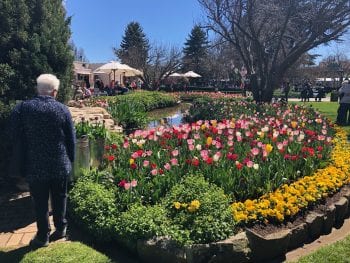
Rob and Heather are taking in the beauty of Floriade and the open gardens around Bowral this week. What a majestic time of year – the sun is out and gardens everywhere are coming to life.
Spring is also the time of year when grapevines awaken from their slumber and begin preparing for the hard work ahead – Vintage 2020.

All across Australia, the first buds of the season are bursting. Some varieties are even working on leaves and bunches already.
Obviously, the growth stage at which each variety is currently, depends heavily on location – climate, soil type, and viticultural management, to name a few. Unless one vineyard is growing a heap of different varieties in close proximity it is almost impossible to compare growth stages across varieties.
Or is it?!
Luckily for you, I happen to know of a little block down in the Adelaide Plains which is growing twelve different varieties in the one spot! Amazingly they also make it into wine, but that’s a story for another day.
So, what this means is that I will be able to show you first hand how each of these varieties develops throughout the growing season. With (essentially) all other variables controlled for. I will also try to compare them to how one of the same varieties is doing in the Adelaide Hills. You should be able to observe a clear difference in development.
Sound like fun??!
Let’s begin…
First things first…
For those of you who have been with me since the early days (thank you!), you’re going to hear a bit of repetition (sorry!). Feel free to get a cup of tea. Otherwise, you may want to give yourself a refresher.
I’m going to be talking a bit about E-L stage throughout the season. For the full rundown on what that actually is, take a look at this post from last year. In short, it’s just a standard classification for the growth stage of vines. It’s just going to make it easier (when we start talking about growth stages) to give the stage a name.
Here is the full official classification care of this nifty book and the Australia Wine Research Institute (AWRI) website – click on the image to see a bigger version…
Side by side comparison…
So, back to this little block I was talking about.
Let’s have a look at some photos and then we’ll have a chat about the differences…
SHIRAZ
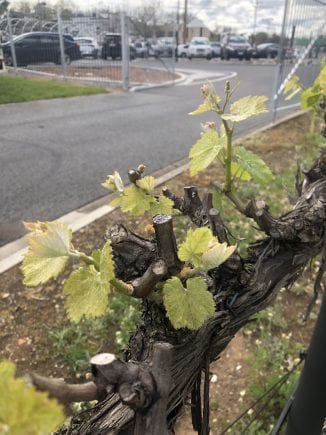
CABERNET SAUVIGNON
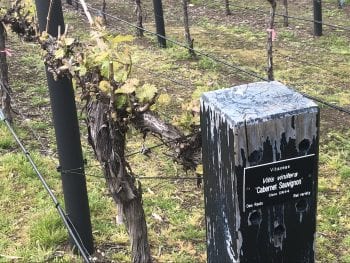
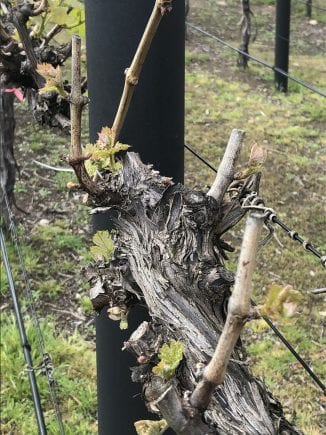
TEMPRANILLO
MERLOT
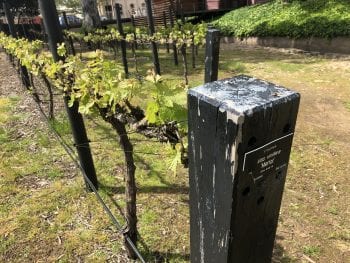
GRENACHE
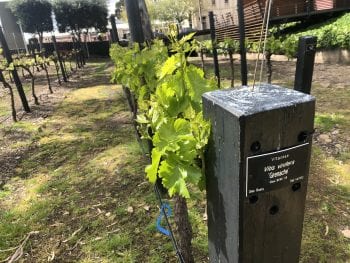
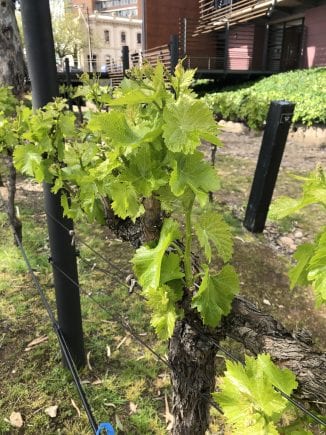
CHARDONNAY
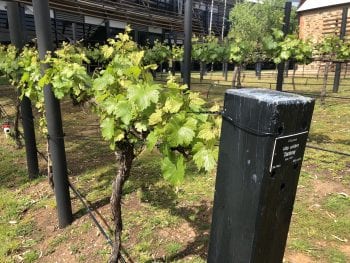
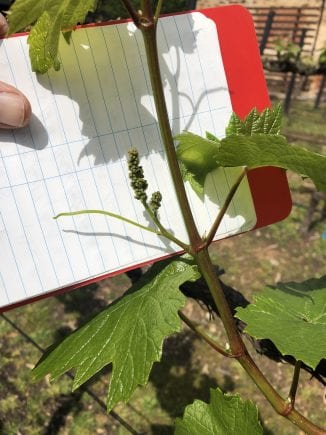
SAUVIGNON BLANC
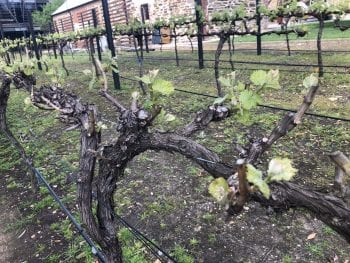
VERMENTINO
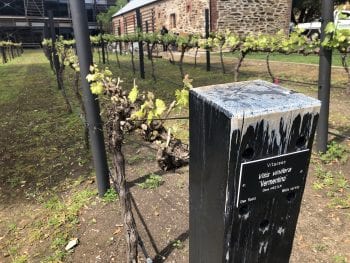
FIANO
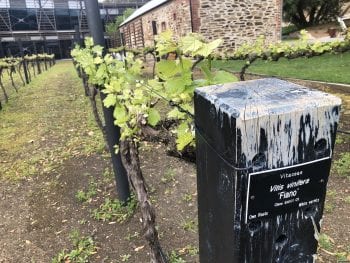
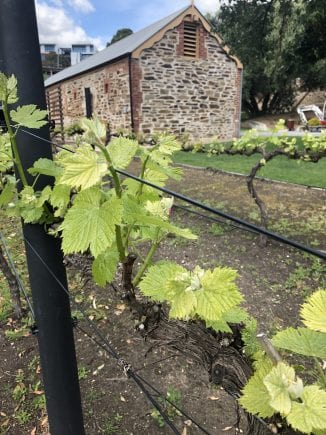
RIESLING
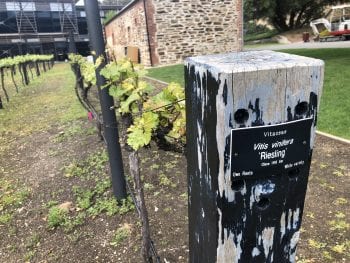
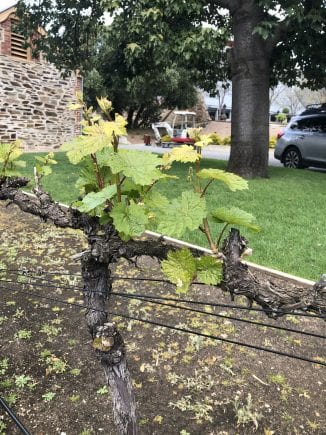
Loving our blog? Sign up for weekly updates straight to your inbox here.
The numbers…
As you can see, there are already some notable differences between varieties. Comparing the photos above you should be able to see that shoot length, bunch development, number and size of leaves are all pretty different across the board.
However, visual inspection only tells part of the story. Take for example Tempranillo versus Chardonnay. Visually it looks like the Tempranillo is a lot further advanced than the Chardonnay. In fact, they are both at approximately the same growth stage (E-L 12). It’s just that Tempranillo has MUCH larger leaves than Chardonnay. Check out the close-up photo of the Tempranillo leaf.
Let’s have a look at the numbers for the full story…
| Variety | No. of leaves | E-L stage |
| Shiraz | 3 – 4 | E-L 11 |
| Cabernet Sauvignon | 2 | E-L 9 |
| Tempranillo | 5 | E-L 12 |
| Sangiovese | 4 | E-L 11 |
| Merlot | 3 | E-L 9 |
| Grenache | 5 | E-L 12 |
| Chardonnay | 5 | E-L 12 |
| Semillon | 3 | E-L 9 |
| Sauvignon Blanc | 2 | E-L 9 |
| Vermentino | 3 | E-L 9 |
| Fiano | 4 | E-L 11 |
| Riesling | 4 | E-L 11 |
So, perhaps not as massively different as it appears. But different nonetheless.
Another comparison…
Now that we’ve seen how the varieties compare, let’s have a look at one of them at a couple of different locations. We’re going to throw all those other variables back into the mix – n particular, altitude. And of course, the higher above sea level, the cooler the climate. Let’s have a look…
Adelaide Plains (42 m above sea level)
E-L 12: Five leaves separated, shoots about 10 cm long
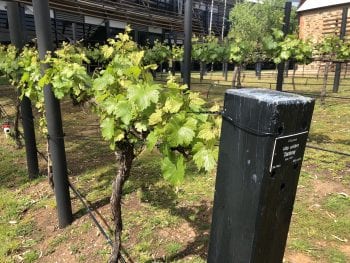
Adelaide Hills (459 m above sea level)
E-L 7: First leaf separated from shoot tip
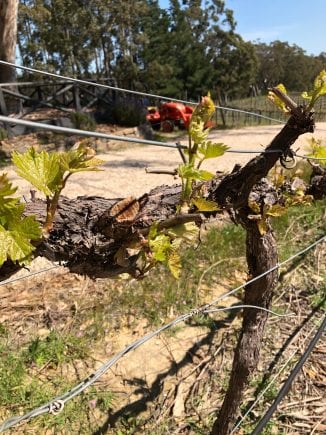
Adelaide Hills – Mount Lofty (654 m above sea level)
E-L 3: Wooly bud
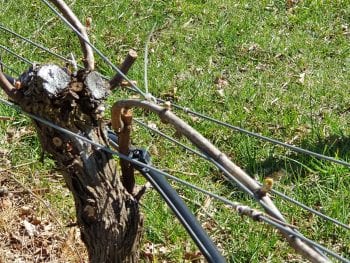
Wow! What a difference a few hundred metres makes!
Let’s plan to meet back here in a month or so when I can show you another comparative look at these vines.
I’ll be back next week though with another educational blog post for you (the topic of which will no doubt miraculously come to me sometime between now and then!*crosses fingers*).
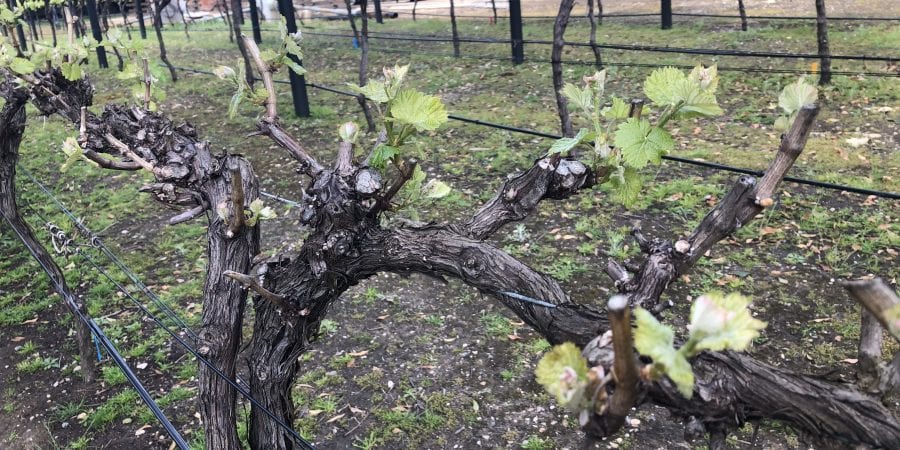
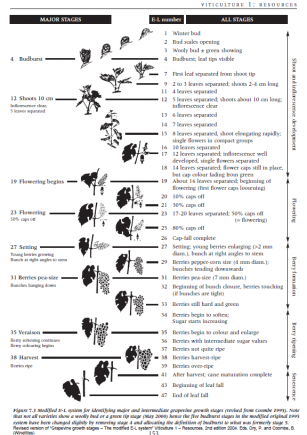
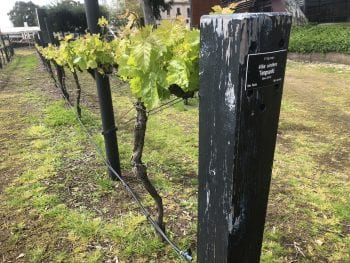
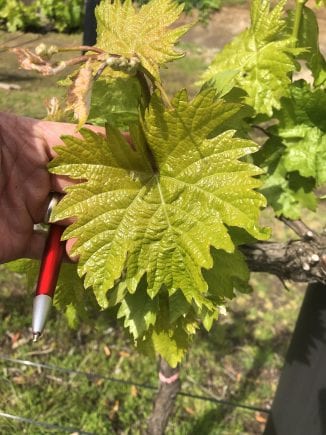
Have any of our (Somerled) wines been reviewed by Halliday?
Hi G-Man! Not for ever and a day actually! As you know we just sell from to our cellar bar guests and to our club members, so it turned out that people were more focussed on whether they liked it themselves or not! So we just realised that it was easier to let them be the judge … maybe we could do with some guest judging from Florida too?! 🙂 Hope you’re well and great to hear from you! Cheers … clink clink!